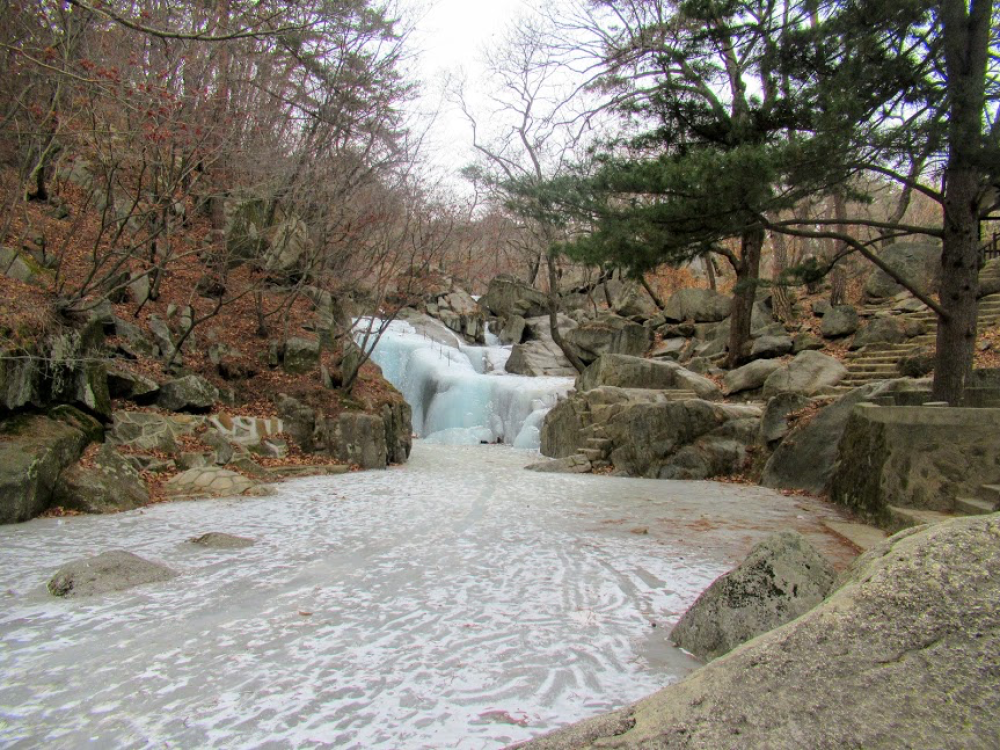

The food history around Dongrim Waterfall in Sinuiju is largely shaped by traditional North Korean cuisine, which has been influenced by the natural resources and climate of the region. Due to the positioning of Sinuiju near the Yalu River, the local diet heavily features river fish and various freshwater delicacies. While North Korea is often private about its culture, it's known that the cuisine avoids the use of cow meat due to cultural preferences and economic reasons. Instead, focus is given to other protein sources, such as poultry, pork, and seafood.
Dongrim itself is a relatively serene area, with limited exposure to international cuisine. Hence, the local food is simple, hearty, and traditional, reflecting the country's self-reliance policy, known as "Juche." This means that food preparation heavily relies on locally sourced ingredients, seasonal vegetables, and grains such as rice, maize, and wheat.
There are no well-documented and specific restaurants located directly by the Dongrim Waterfall due to the remote nature of the location and North Korea's strict tourism policies. However, in the city of Sinuiju, there may be state-run establishments where visitors can try local cuisine. It's encouraged for tourists to check with their tour operators for the most current and reliable eateries where these or similar dishes are served. When visiting North Korea, it is important to note that dining options may be limited and will certainly be assigned as part of a guided tour.
Given the governmental control of the tourism sector, there likely are a few dining venues available in the broader region of Sinuiju which cater to tourists. However, due to the lack of freely available information, it is not possible to provide specific addresses or names of these establishments. Visitors to the area typically have their meals arranged by their tour providers at approved dining facilities, often showcasing the dishes mentioned above.